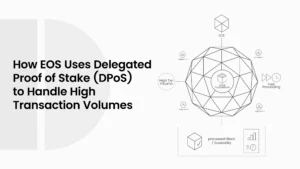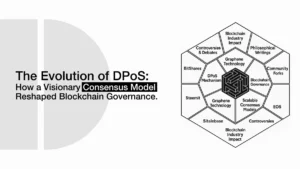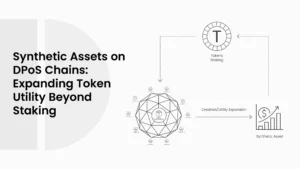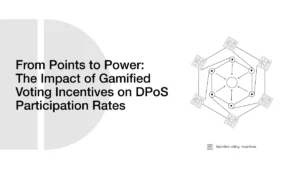Why Delegated Proof of Stake (DPoS) Appeals to Smaller Blockchains
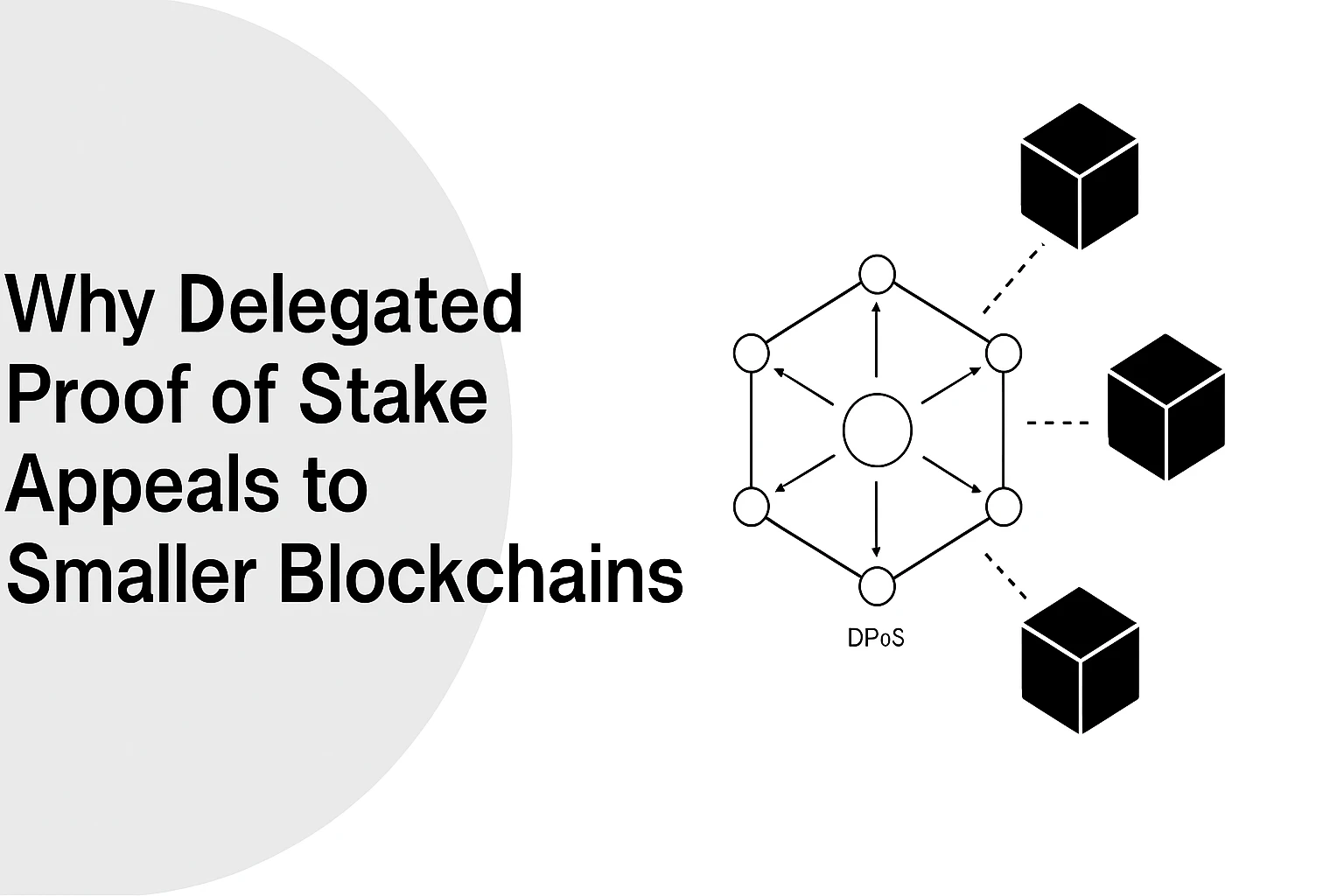
Every blockchain needs a way for people to agree on what is true. This is called consensus. Without it, the system will not work. The first big way to do this was Proof of Work, used in Bitcoin. Then came Proof of Stake, which uses tokens instead of machines to keep the system safe.
- What Is Delegated Proof of Stake?
- DPoS vs Other Consensus Systems
- Why Smaller Blockchains Like Delegated Proof of Stake
- Low Cost and Efficiency
- Faster Transaction Speed
- Easy Governance
- The Governance Advantage in Small Chains
- Community Participation
- Flexibility in Upgrades
- Security vs Centralization Balance
- Problems of DPoS That Matter Less in Small Chains
- Centralization Concerns
- Risk of Vote Buying
- Low Voter Turnout
- Case Studies of Small Blockchains Using DPoS
- EOS
- BitShares
- Steem (Now Hive)
- Why DPoS May Grow With Small Blockchains in Future
- Need for Scalable Yet Simple Systems
- Support From New Algorithms
- Connection to Web3 Growth
- Conclusion
- Frequently Asked Questions About Why DPoS Appeals to Smaller Blockchains
- What is Delegated Proof of Stake in simple words?
- Why do smaller blockchains use Delegated Proof of Stake more often?
- Is Delegated Proof of Stake better than Proof of Work?
- Does Delegated Proof of Stake make blockchains less secure?
- Which projects use Delegated Proof of Stake today?
- Glossary
Later, a new idea called Delegated Proof of Stake (DPoS) was introduced. This method is different. It enables individuals to elect a small number of trusted representatives, otherwise known as delegates, who, in turn, make blocks. DPoS is therefore cheaper and faster than other systems due to this.
For smaller blockchains, speed and cost really matter. They lack large communities such as Bitcoin or Ethereum. They require something that is easy and requires fewer individuals and fewer computers. That is why DPoS has become popular for them. It gives them security but also saves time and money.
ALSO READ: Bridging Governance: How DPoS Chains Can Integrate with DAOs
What Is Delegated Proof of Stake?
DPoS works like an election in a small town. People who own tokens can vote. Instead of every person running the town, they choose a few leaders. These leaders are called delegates or witnesses. The leaders take turns making decisions; in blockchain, they make blocks.
If a delegate does a bad job, the community can vote them out and pick someone else. This keeps them honest most of the time. The power is not with one machine or one person but shared with chosen members.
DPoS vs Other Consensus Systems
In Proof of Work, miners must solve hard puzzles with computers. This uses a lot of power and money. In Proof of Stake, people with more coins can create more blocks, but it is still slow when many people join.
Delegated Proof of Stake is faster because not everyone needs to confirm everything. Only a few delegates do it. This means the system can handle more transactions every second.
| Feature | Proof of Work (PoW) | Proof of Stake (PoS) | Delegated Proof of Stake (DPoS) |
| Speed | Slow, 5–7 TPS | Medium, 20–100 TPS | Fast, 1000+ TPS possible |
| Cost | High, needs miners | Medium, needs tokens | Low, only delegates run nodes |
| Energy | Very high | Lower | Very low |
| Control | Miners | Validators | Voted delegates |
This table shows why DPoS is often the better choice when a project is small and wants something quick and cheap to run.
Why Smaller Blockchains Like Delegated Proof of Stake
Low Cost and Efficiency
Smaller chains do not have much money or resources. Running Proof of Work would mean buying expensive computers and paying big electricity bills. With Delegated Proof of Stake, only a few people run the nodes. This cuts down costs.
Also, transaction fees are lower. If you are running a small blockchain for gaming or community tokens, high fees can scare people away. Delegated Proof of Stake helps keep the fees cheap, so people keep using the chain.
Faster Transaction Speed
Nobody likes to wait long for a transaction to finish. In Bitcoin, it can take 10 minutes or more. Ethereum can also be slow during busy times. Small blockchains cannot afford this.
Delegated Proof of Stake makes confirmation times very quick, sometimes just a few seconds. For smaller chains, this is a big win. They can say their system is fast and simple, which attracts more users.
ALSO READ: Hybrid Governance Models: Blending DPoS with Traditional PoS
Easy Governance
Governance means how decisions are made. In DPoS, token holders vote directly for who they trust. This works really well in small groups. The community knows each other, and it’s easier to see who is trustworthy.
For example, if a delegate starts acting badly, people can quickly vote them out. This keeps the blockchain fair and secure without needing huge debates or expensive forks.
The Governance Advantage in Small Chains
Community Participation
In small blockchains, people know each other more. The voters are not millions of strangers but a smaller community. This facilitates talking, discussing, and agreeing on things. The token holders can select the delegates that they trust, perhaps even individuals that they have known within the community.
When voters feel close to the delegates, they take part more. This higher participation helps the chain stay alive. Without people voting, a blockchain can die. DPoS makes it simple enough so people keep showing up.
Flexibility in Upgrades
A small chain must be able to change fast. Bugs can happen. New features may be needed. In Proof of Work, upgrades can take years and sometimes split the community. But in DPoS, it is easier.
The delegates and voters can agree and upgrade without long delays. That is why DPoS fits better for chains that are still growing. EOS and BitShares showed this kind of flexibility early on, even though they are larger examples. For smaller chains, this is even more useful.
Security vs Centralization Balance
Some people say DPoS is too centralized. Since only a few delegates make blocks, the control looks too narrow. This is true in big chains. But for smaller chains, the trade-off is worth it.
When the number of voters is small, too much decentralization can slow things down. Instead, having trusted delegates gives speed and still keeps enough fairness. New systems like CD-DPoS (Li et al., 2023) even add reputation scoring, which makes it safer to pick good delegates.
Problems of DPoS That Matter Less in Small Chains
Centralization Concerns
Big chains with millions of users worry about too much power in the hands of a few. But in small chains, where maybe only a few thousand people are active, this is not so bad. It is easier to keep an eye on what delegates are doing.
Risk of Vote Buying
Yes, vote buying can happen. Delegates may offer rewards to voters just to get more power. This is a problem in big systems where it is hard to track. But in small systems, the community is tighter. People will notice if someone is cheating and can remove them quickly.
Low Voter Turnout
In some DPoS systems, many users do not bother to vote. This lowers fairness. In small blockchains, though, the voter base is more active because the community is smaller. The sense of ownership is stronger.
| Common Problem in DPoS | Why It Matters Less in Small Chains |
| Centralization | Easier to watch delegates closely |
| Vote buying | Small community spots cheating fast |
| Low voter turnout | Stronger sense of ownership, more active voters |
This table shows that small blockchains can handle these issues better than big ones.
Case Studies of Small Blockchains Using DPoS
EOS
EOS is not exactly small, but it is one of the best examples of DPoS in action. It uses a system with 21 block producers. This showed the world that DPoS can run fast networks with many apps. For smaller chains, EOS was proof that DPoS can work.
ALSO READ: Why Some DPoS Chains Thrive While Others Fade Away
BitShares
BitShares was one of the first to use DPoS. It was created for decentralized trading. By using DPoS, it gave fast transactions and low fees. Even though the project is not very big now, it has shown that smaller systems can use DPoS and run stably for years.
Steem (Now Hive)
Steem used DPoS for a social content blockchain. People posted blogs and earned tokens. Delegates kept the chain running smoothly. Later, it became Hive. This showed that even a blockchain focused on community content can use DPoS successfully.
| Blockchain | Year Launched | Purpose | Why DPoS Worked |
| EOS | 2018 | Apps and smart contracts | Fast blocks, flexible upgrades |
| BitShares | 2014 | Decentralized exchange | Cheap fees, quick trades |
| Steem/Hive | 2016 | Social media and content | Easy voting, strong community |
These examples prove that both big and small blockchains can use DPoS, but for smaller ones it is sometimes the perfect choice.
Why DPoS May Grow With Small Blockchains in Future
Need for Scalable Yet Simple Systems
As more people try new blockchains, many projects will start small. They may be for local tokens, games, or niche apps. These chains cannot pay for huge energy costs or long delays. They need something fast and light.
DPoS gives them a system that is both scalable and simple. Instead of asking thousands of computers to agree, it asks only a few trusted ones. This keeps the system efficient even when the project does not have many users.
Support From New Algorithms
Researchers are working on better versions of DPoS. For example, Li et al. (2023) talked about CD-DPoS, which mixes reputation scoring with community discovery. This makes voting more fair and pushes out bad actors faster.
When new upgrades like this get added, smaller blockchains can enjoy even more security without losing speed. It shows that DPoS is not standing still but getting better with time.
Connection to Web3 Growth
The Web3 world is full of small projects. Some are for NFTs, some for games, some for local finance. They all need blockchains that are fast, easy, and low-cost. This is why DPoS will keep growing.
When more people start small chains for their communities, they will see that DPoS gives them exactly what they need. Quick confirmations, easy governance, and affordable costs.
ALSO READ: How Yield Wars Between Validators Distort DPoS Ecosystems
| Reason | Why It Matters | How DPoS Helps |
| Cost | Small chains lack big funds | DPoS reduces energy and fees |
| Speed | Users want instant actions | DPoS confirms in seconds |
| Governance | Communities need control | The voting system is simple and fair |
| Security | The risk of bad actors is real | Reputation and incentives remove them |
Conclusion
Delegated Proof of Stake is not perfect, but for smaller blockchains, it makes a lot of sense. It gives them speed, low cost, and a simple way to govern the chain. Problems like centralization or vote buying are real, but in smaller communities, they can be handled faster.
Big blockchains like Bitcoin will always use heavy systems like Proof of Work. But small projects, local apps, or niche tokens do not need that. They need something quick, light, and easy to run. That is why many of them look to DPoS.
As Web3 grows, more new blockchains will be born. Most of them will start small, and many will choose DPoS to power their systems. It is the balance of performance and trust that makes it so attractive. In the end, Delegated Proof of Stake may be the tool that lets small blockchains survive and grow into something bigger.
Frequently Asked Questions About Why DPoS Appeals to Smaller Blockchains
What is Delegated Proof of Stake in simple words?
It is like an election. Token holders vote for a few people called delegates. These delegates take turns making blocks and keeping the blockchain running.
Why do smaller blockchains use Delegated Proof of Stake more often?
Because it is cheaper, faster, and easier to manage. Small chains cannot afford mining like Bitcoin. Delegated Proof of Stake gives them a system that works with little cost.
Is Delegated Proof of Stake better than Proof of Work?
For small chains, yes. Proof of Work needs expensive machines and a lot of energy. DPoS is faster and cheaper, so it fits them better.
Does Delegated Proof of Stake make blockchains less secure?
Sometimes yes, because only a few people control it. But small chains can watch their delegates more closely, which makes it safe enough.
Which projects use Delegated Proof of Stake today?
Examples include EOS, BitShares, and Hive (previously Steem). They show that DPoS can work in real life.
Glossary
- Consensus: The way a blockchain agrees on what is true.
- Delegate: A person or node chosen to make blocks in DPoS.
- Block Producer: Same as delegate, makes new blocks.
- Validator: A person or computer that checks blocks in Proof of Stake.
- Governance: How decisions are made in a blockchain system.

